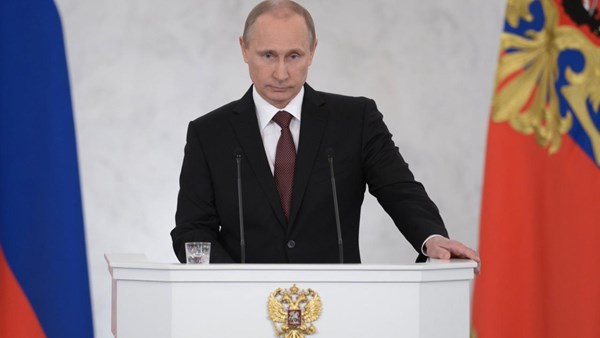Putin announces navy upgrades in light of ‘NATO threat’
In response to “threats from NATO”, the Russian Navy will continue to undergo modernization, said Russian President Vladimir Putin at a military meeting in Sochi, RBC reports. By the end of 2019, the navy will have acquired more than 480 new vehicles and weapons.
“Today we must assume that NATO’s expansion, the development of its military infrastructure near Russia’s borders, is one of the potential threats to the security of our country. For this reason, we have been and will continue to pay the closest attention to the technical retrofitting of the Armed Forces. Including, of course, the upgrading of the Russian Navy,” said the head of state.
Through the state defense order for 2019, the Russian Navy acquired two submarines, 23 surface vessels, three aircraft and four coastal missile systems, the president noted. In addition, the navy should receive more than 400 new missiles and torpedoes. In particular, this will involve the retrofitting of Borei-class submarines and their weapons – Bulava missiles. One of the Borei-class submarines, Knyaz Vladimir, is now in the concluding stages of government testing, and the construction of another four submarines of that class is underway.
“As for the Navy’s group of strategic nuclear forces, the carrier vessels of Kalibr long-range precision weapons form the basis of it. These missiles, as is well known, are capable of destroying targets up to 1,500 km away. Implementation of the state program’s tasks will make it possible to more than double the number of them by 2023,” the president added.
At a session of Russia’s Security Council at the end of November, Putin announced plans to bring the proportion of modern equipment in the Armed Forces up to 70%. He noted that the current figure is 68%.
Previously the Russian president said that defense spending would go down since the peak of modernization has passed. According to the Stockholm International Peace Research Institute (SIPRI), Russia spent $61.4 billion on defense in 2018 (3.9% of its GDP).
